Aquarium duckweed is one of the aquatic plants that can be grown in an aquarium. Aquariums and garden ponds can be decorated with duckweed to achieve a unique touch. Duckweed is a small plant that grows in water and collects nutrients from it. This amazing plant is able to grow almost anywhere; it spreads quickly and adapts to the surrounding environment. In this blog post we will look at basic facts about duckweed, it’s requirements, benefits, care and lots more.
Basic Facts
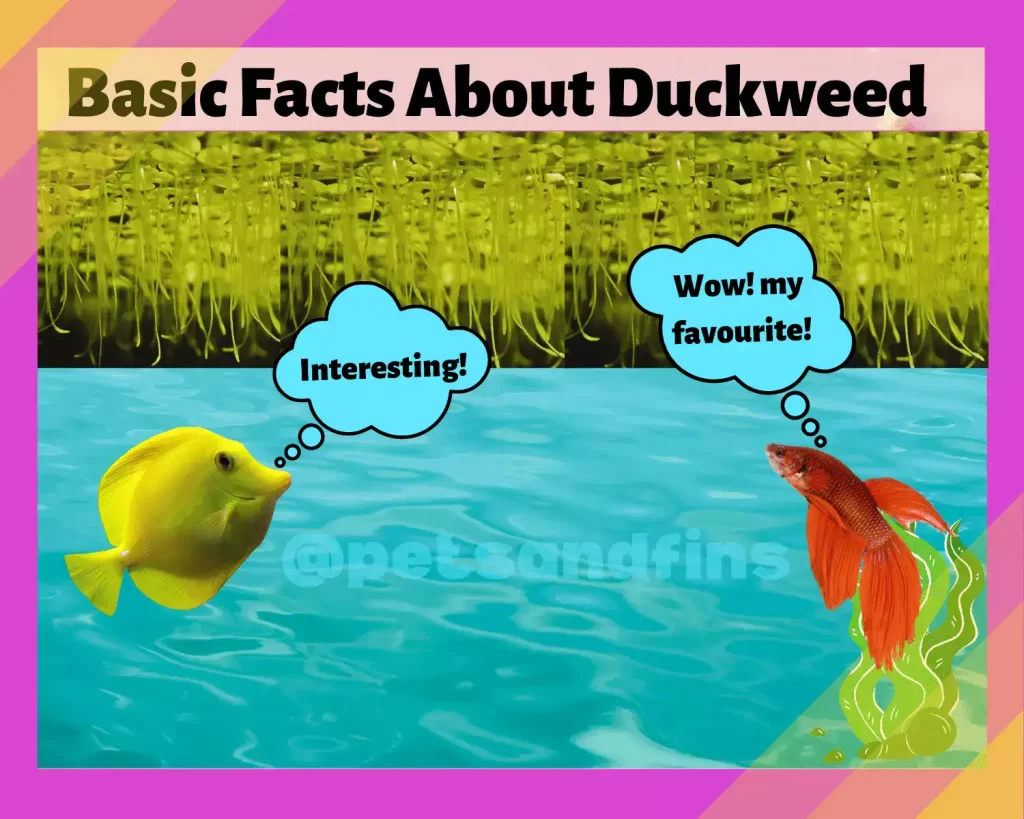
Duckweed is a member of the Lemnaceae family. It is a flowering aquatic plant that can be found in both temperate and tropical habitats.
It can grow in freshwater environments, and usually found in still or slow-moving water. There are over 30 species of duckweed, some of which have been used as food and medicine for thousands of years.
Among these Lemna Gibbs, Lemna minor and Lemna minuta (introduced) are most popular.
It is an ideal plant for aquariums because it does not need any special care or fertilization. In fact, it can tolerate water variations.
It can be grown in an open container with no cover on top.
Duckweed is a fast growing aquatic plant that multiplies quickly and spreads across the entire surface of your aquarium within few days after you introduce it into your tank.
It is a very hardy plant that can survive in almost any environment. The flowers are very small (microscopic) and bloom during springtime.
Being a perennial aquatic plant, it forms a lush green carpet covering the water surface.
It is also called as water lentil or water lenses.
Major Types
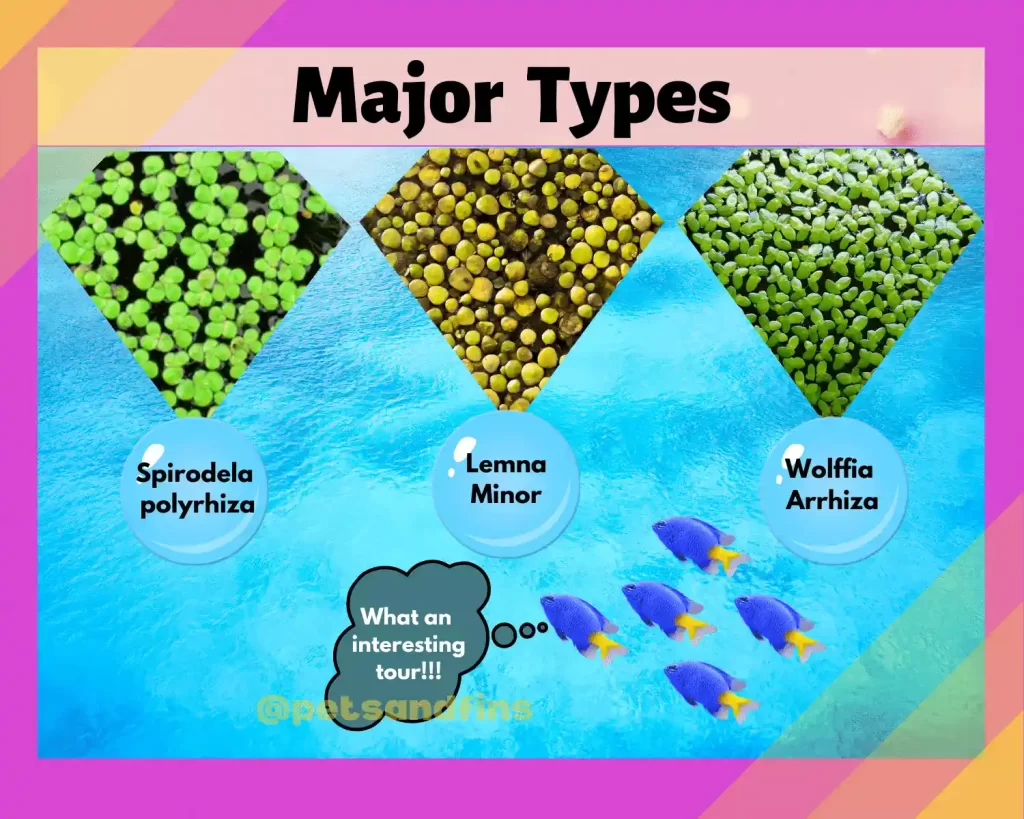
Duckweed is a very small plant but it is important to the aquatic ecosystem. There are 3 main types of duckweed:
Spirodela polyrhiza
Lemna minor and
Wolffia arrhiza
In the world of plants, size matters.
Spirodela has leaves that are about 5mm in size. Lemna leaves are 3mm in size, and Wolffia’s are 1mm. Wolffia also doesn’t have roots—it just floats around on the surface of ponds and lakes.
By having different sizes, they can all live in their own niches without competing for resources or crowding out each other’s space—and if you think about it, this happens all over nature!
Appearance
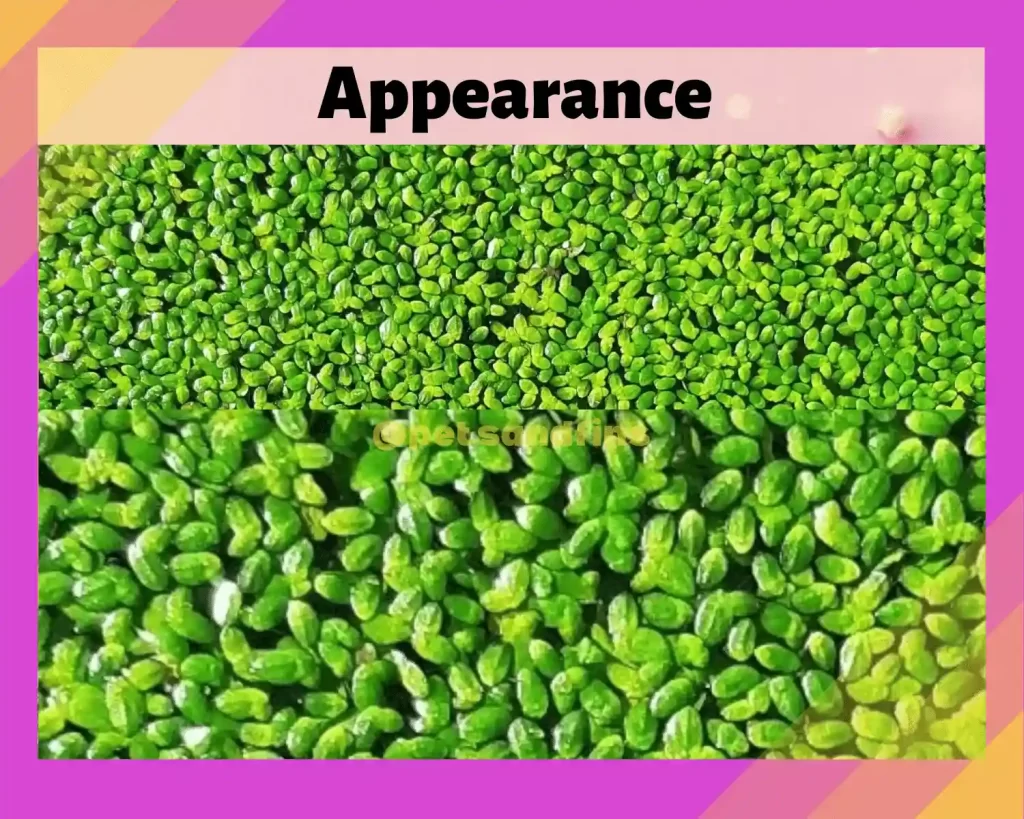
Duckweed is a very unique aquatic plant. It lacks an obvious stem, so it floats on the surface of the water. Its leaves are flat and vary in shape based on the type of duckweed.
The shade of green also varies, depending on the type. Duckweed has single root or short hairy root like structures.
Duckweed is an excellent choice for your aquarium because it helps clean your tank from toxins and nutrients, which can lead to algae growth in your tank. This is why duckweed should be added to your aquariums with live plants.
Benefits

Duckweed, a tiny aquatic plant, is remarkable for its ability to clean up waste and help the environment.
The Nepalese Journal of Biosciences published a detailed paper on duckweed, and it’s worth reading if you’re interested in how this little plant can help you keep your aquarium clean. (PDF) BIOLOGICAL TECHNIQUE IN REDUCING THE WATER DISSOLVED NUTRIENTS IN THE DAIRY WASTEWATER BY USING DUCKWEED (researchgate.net)
Duckweed removes nitrates from the water in your tank by absorbing nutrients from your fish waste and decomposing it into oxygen and carbon dioxide. It also absorbs excess minerals (bioremediation) and can even be used to reduce water temperature (thermophilic). This is great because it reduces the amount of work you have to do in order to maintain your aquarium.
Undisturbed by wave action: Duckweed is a great plant for your aquarium, as it can withstand the wavy movements of aquariums!
Duckweed is easy to grow in aquariums because it thrives on the nutrients from the fish waste and dead plant matter. Duckweed can help you understand the water quality This makes it an ideal plant to grow in your aquarium.
Can help understand water quality: Duckweed is also a good indicator of water quality, as it will show you if there are any problems with your aquarium. If you notice that the duckweed is dying off, then this may be a sign that there is something wrong with the water quality and you should check it out.
Great nutrition source for aquatic life : Duckweed also acts as a great food source for aquatic life such as koi fish and goldfish just to name a few. It contains lots of protein which is good for them along with fiber and fat which are essential nutrients that they need to thrive on too! It acts as a food supplement apart from what you feed your fish.
Aquarium duckweed can help clean the intestines of the fish: Since aquarium duckweed has lot of fiber content, it helps the fish excrete all the toxins through its waste and helps the fish stay healthy.
Duckweed can also be used as a shade for your fish—Duckweed on top of the water surface give your fish some protection from harmful UV rays of the sunlight that can cause them harm over time. Sometimes, the fish find very bright places unsafe and this can stress them and lead to health problems. So the shade from duckweed can prove to be very helpful.
It is great for breeding fish: If you want to grow some babies in your tank, planting duckweed will provide the fish some space to breed and lay their eggs (and keep them safe).
It creates a safe zone for fish: The plants spread across the surface of your aquarium and create a “safe zone” for fish in which they can hide. This will prevent them from being injured or eaten by their tank mates.
It reduces water evaporation: This is especially important if you live in an arid area where hot weather can cause evaporation to reduce your water levels more quickly than usual. The duckweed will help reduce this loss so that you don’t need to add as much water as often.
It helps manage temperature: If your aquarium gets too hot, then this can be dangerous for fish because their bodies can’t handle such heat without proper cooling measures being taken. (like adding more air circulation). Duckweed surface cover will be able to keep temperatures under control without having to worry,
It’s a great choice for your aquarium because it provides oxygen and absorbs carbon dioxide to help keep your fish healthy, as well as preventing them from jumping out of the tank by creating a natural barrier over the top.
It also looks really cool! Duckweed has a very nice aesthetic quality and can create an interesting roof over your fish tank or pond. You can even use it to kill algae on rocks or other aquarium decorations!
Duckweed is super easy to care for—no substrate needed! And it’s very flexible in terms of gH (water hardness) too—so no matter how the gH in the tank varies, this plant will thrive in it!
However there are few things to keep in mind, so that the duckweed does not cause problems.
Things To Remember

Duckweed is a common aquarium plant that can be used to help clean up your tank, but it can also get out of hand. Here are some things to remember:
Duckweed blocks sunlight. Remember not to allow the entire tank to get covered by duckweed.
Dead duckweed depletes oxygen and can be dangerous for fish and plants. Trim regularly so that you don’t get too much growth in your tank.
Duckweed grows like a weed, so you’ll have to keep up with trimming and planting it less than other plants.
Duckweed deprives plants of nutrients, so always plant less than you think you’ll need and then maintain by trimming down any excess growth in your tank.
Check filters regularly because duckweed clogs them quickly! This is why I always recommend using a net cloth around the filter absorption area.
Planting
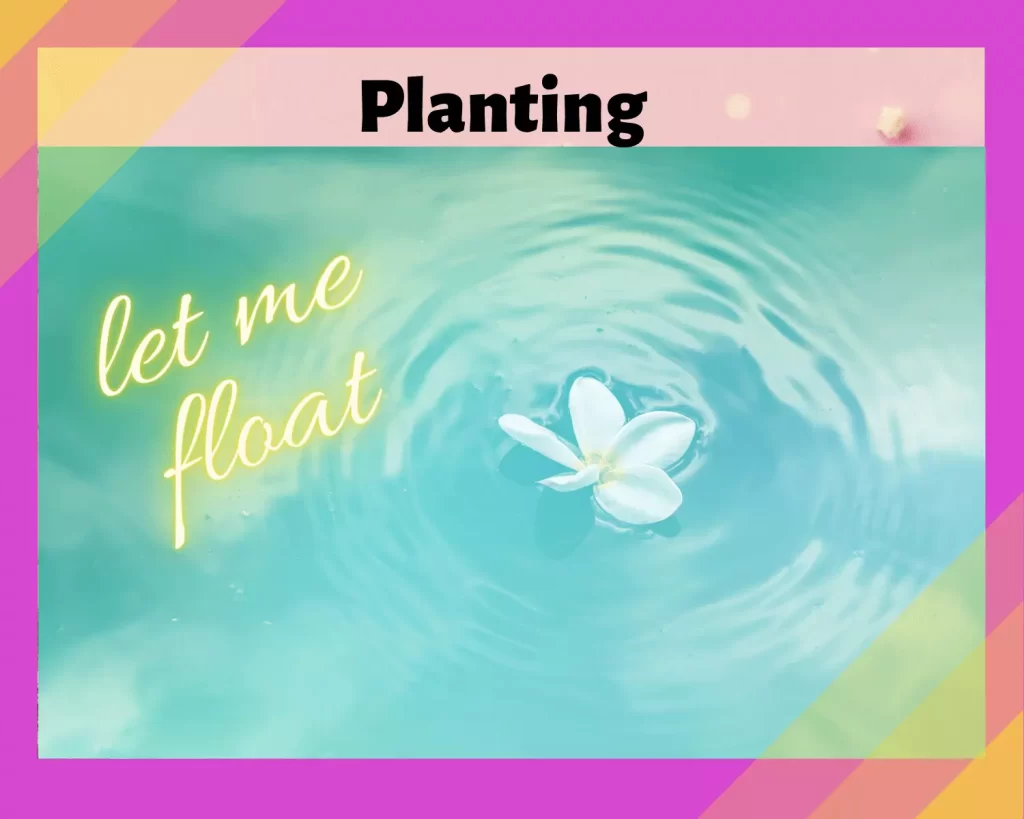
- Take a bucket of water with potassium permanganate at the rate of one tablespoon per 45 litres (which is approximately 20 gallons).
- Soak for 30-60 seconds.
- Remove damaged or dead weed.
- Rinse the duckweed.
- Just add to aquarium and plant less – they will grow quickly.
Requirements
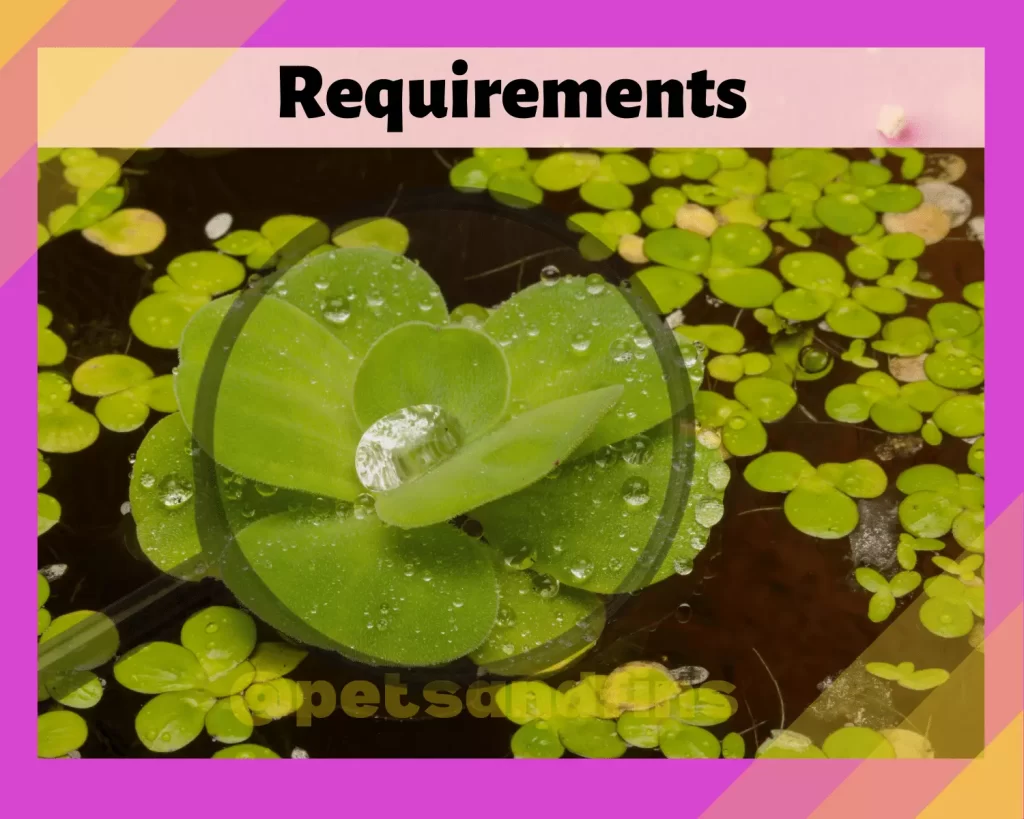
To keep your aquatic plants healthy, you’ll need to consider a number of factors.
- Duckweed prefers dense, slow waters. It can be grown in an aquarium or pond.
- Duckweed also requires 6.5 to 7.5 ideal pH. However, a little here or there doesn’t harm your duckweed.
- Excessively dirty water can kill newly planted duckweed or will prevent their propagation.
- Water temperature: Duckweed prefers temperatures between 60°F and 80°F. If your water is kept at this range, the duckweed will grow quickly and thrive.
- If your aquarium doesn’t have enough nutrients for duckweed growth, it will become too acidic for them to survive in over time. You can also prevent this by adding fertilizers that contain iron.
- Test pH regularly.
- Needs LED Light or sunlight to grow.
Care

The aquarium duckweed is a very interesting plant to keep in your aquarium. It grows quickly, and can be a great addition to any tank. It does best in direct light, but can grow in both cold and warm water.
It needs no substrate for growth, but it does need a light source to grow. This plant will react to poor water conditions, so it’s important to keep your water clean and healthy for this plant.
Aquarium duckweed is a great choice for beginners because of its ease of care. It only requires a light source or direct sunlight, which makes it easy for beginners to care for without having to worry about other factors like substrate or water hardness.
If your aquarium duckweed is not growing as well as it should, it could be a sign of a lack of nutrients in the water. Aquarium duckweed needs nitrates, potassium, phosphorus and light to thrive. CO2 is also recommended for healthy growth.
Controlling Duckweed Growth
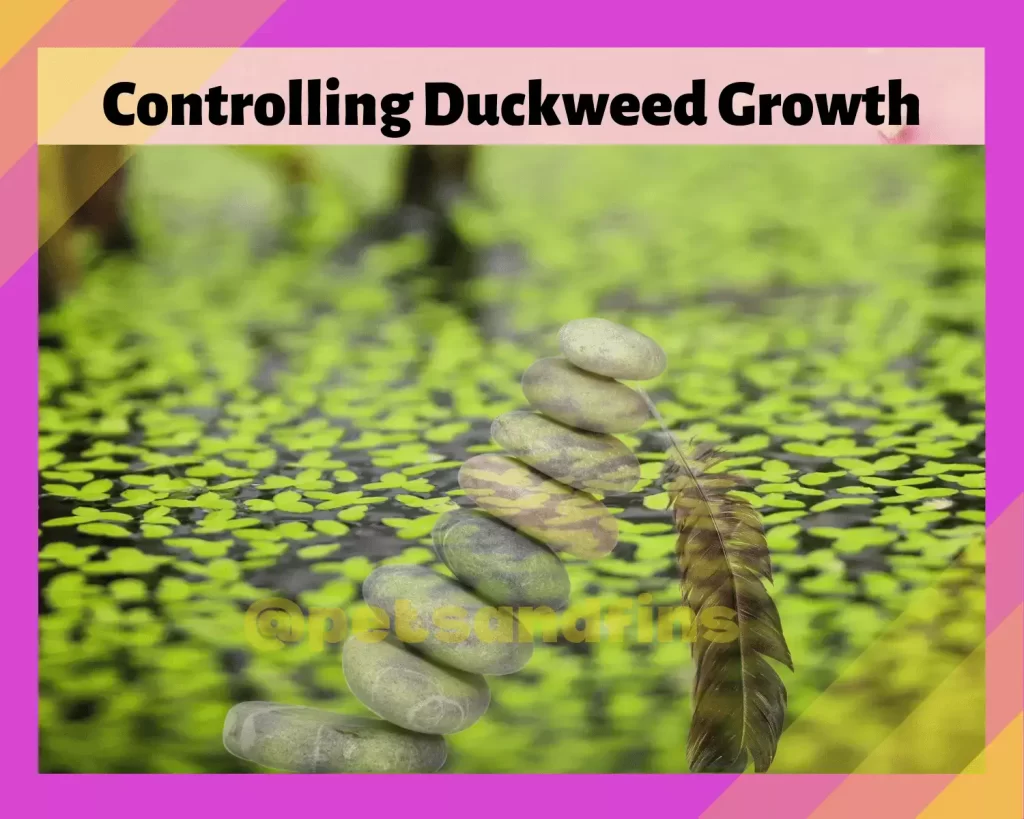
There are plenty of ways to keep duckweed under control. Here are some tips:
Manual Cutting: You can cut off duckweed manually, but this has to be done regularly.
Increasing Aeration: Duckweed need slow waters so increasing aeration will help limit its growth.
Introducing Fish: Koi, grass carp, goldfish, or any other type of fish that eats plant matter will also help keep duckweed under control.
Limit the Light: Either reduce number of hours or block source by using screens or black tape to prevent light from reaching the water surface. Duckweed grows most vigorously during daylight.
Chemicals: As a last resort if nothing else works then use chemicals like copper sulfate or potassium permanganate.
Reproduction
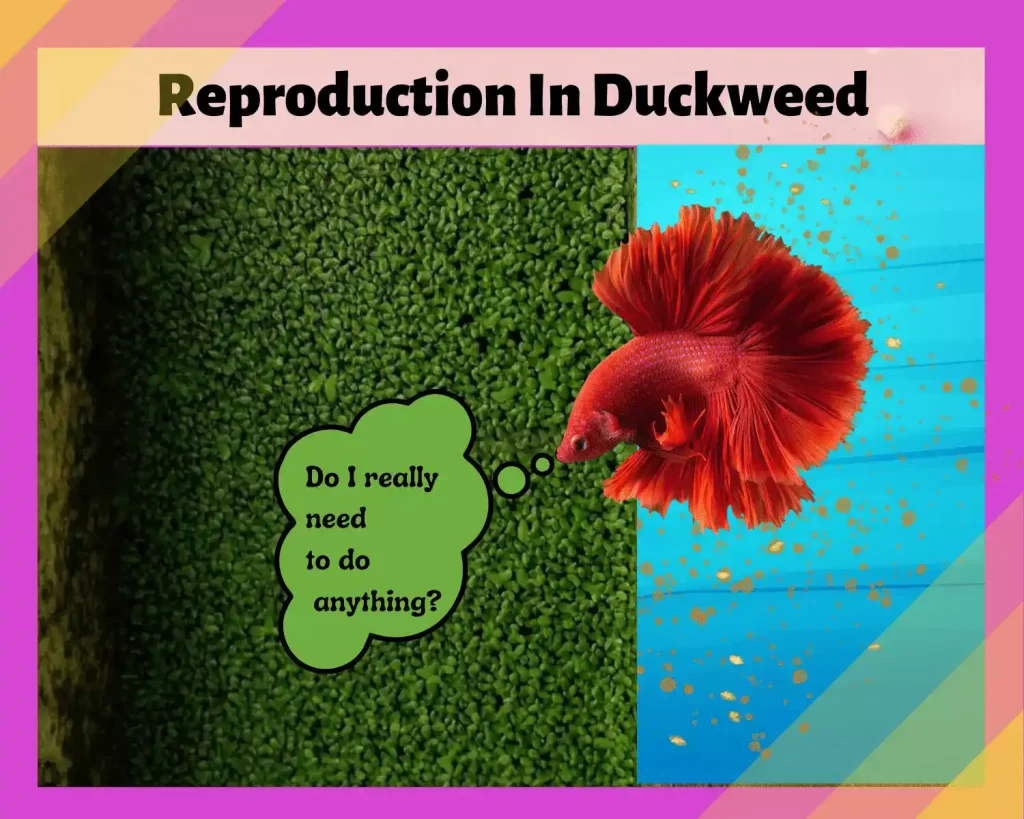
Duckweed is a type of aquatic plant that grows quickly and easily. They can be found in ponds, lakes, and slow-moving streams. Duckweed reproduction is very simple and does not require manual intervention.
Aquarium duckweed reproduces via asexual budding.
Unlike other plants duckweed does not planting. They just grow quickly on their own. Asexual budding of duckweed occurs when new shoots form at the ends of stems. The buds grow into new plants that look like miniature versions of the parent plant.
Conclusion
In conclusion, it is important to remember that not all aquarium plants are suitable for your fish tank. Duckweed is an excellent plant that has many benefits for your aquarium. It can help keep the water clean and clear by removing debris from the bottom of your tank as well as providing nutrition for other plants and animals living in it. However, do some research before deciding on which plant species will work best in yours!


